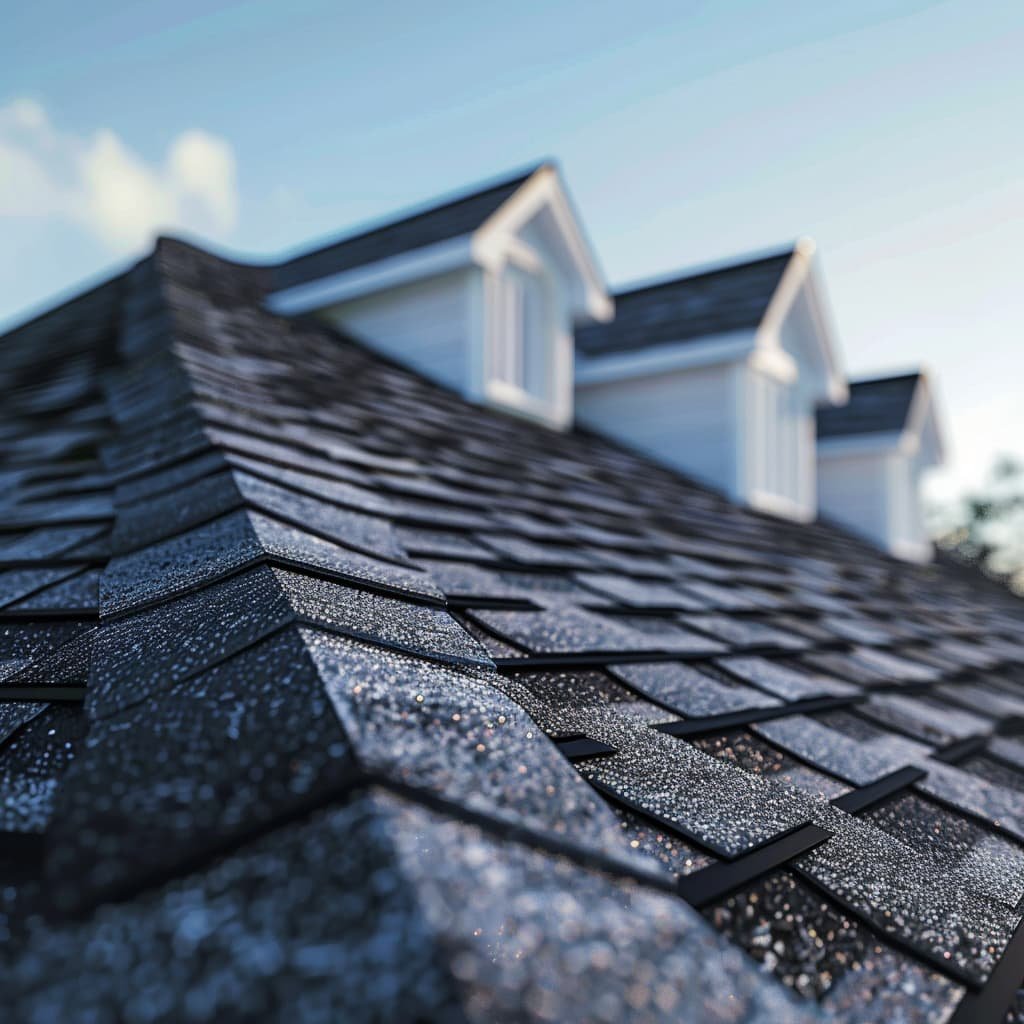Does Heat Affect Shingles?
Asphalt shingles are a very common roofing material for good reasons. They’re inexpensive, lightweight, relatively easy to replace, and have a reasonable lifespan. However, one of the things homeowners and property managers need to pay attention to in the summer is heat impact. How much damage can the sun and often high temperatures of the midwest have on the shingles? This blog will explore how heat affects shingles, signs of heat damage, and how to protect your roof during hot weather.

How Heat Affects Asphalt Shingles
Over time, exposure to the elements will cause asphalt shingles to deteriorate. Extreme heat and sun exposure can speed up this process, meaning you need to replace shingles or the whole roof earlier than the estimated roof life expectancy. Here’s how heat specifically affects shingles:
- Thermal Expansion and Contraction: Asphalt shingles expand when heated and contract as they cool. Repeated cycles of expansion and contraction can cause shingles to crack, curl, or become brittle over time.
- UV Radiation: Prolonged exposure to the sun’s ultraviolet (UV) rays can degrade the asphalt and the granules on the shingles’ surface, leading to a loss of flexibility and protection. UV radiation accelerates the aging process, causing shingles to wear out faster.
- Moisture Evaporation: High temperatures can cause the moisture within the shingles to evaporate, making them dry and brittle. Brittle shingles are more prone to cracking and breaking, reducing their effectiveness in protecting your home.
- Granule Loss: The granules on asphalt shingles protect the underlying asphalt from UV rays. Heat can cause these granules to loosen and fall off, exposing the asphalt to further damage.
Signs of Heat Damage on Shingles
Recognizing the signs of heat damage early can help prevent further deterioration and costly repairs. Here are some key indicators that your shingles may be experiencing heat damage:
- Cracking: When the shingles become dry and inflexible, they are prone to cracking. Cracked shingles increase the risk of moisture getting below the shingles and into the roof structure.
- Shrinking: Heat can cause shingles to shrink. When this happens, the nails holding the shingles to the roof can pop out. Blisters in the shingles form, and when they pop, they leave the asphalt unprotected and prone to increased degradation, which can lead to leaks.
- Curling or Buckling: Shingles that curl or buckle are a clear sign of thermal expansion and contraction, leading to gaps where water can seep in.
- Damaged Flashing: Metal flashing is more durable, but if you have plastic flashing, it can start to pull away, stretch, and break as the roof joists expand in the heat. Damaged flashing allows water to penetrate the roof, causing leaks and mold or mildew growth.
- Granule Loss: Excessive granule loss can leave shingles vulnerable to UV damage. Check your gutters for an accumulation of granules.
- Discoloration: Fading or dark streaks on the shingles may indicate UV damage or algae growth exacerbated by heat.
- Warping: Warped shingles do not lie flat against the roof, compromising the roof’s ability to shed water effectively.
Preventing Heat Damage
While you can’t control the weather, there are several steps you can take to protect your roof from the adverse effects of heat:
- Proper Installation: Ensuring your roof is installed correctly is the first step in preventing extreme heat damage. This includes proper alignment and secure fastening of the shingles.
- Lighter Color Shingles: Installing lighter-colored shingles can reduce the heat absorbed, as black shingles absorb more heat and are more prone to damage. Lighter colors can extend the life expectancy of your shingles.
- Proper Ventilation: Ensure your attic is well-ventilated. Proper ventilation helps regulate the temperature in the attic, reducing the heat that reaches the roof shingles.
- Regular Inspections: Schedule regular roof inspections, especially before and after the hot season. A professional can identify and address potential issues early, preventing costly repairs. Yearly roof inspections help prolong the life of your roof and prepare you financially for any repair costs.
- Shade: If possible, provide shade for your roof by planting trees strategically around your home. Trees can reduce the amount of direct sunlight your roof receives, helping to keep it cooler.
- Maintenance: Keep your roof clean and free of debris. Organic matter like leaves can retain moisture and contribute to shingle degradation when combined with heat.
So, does heat affect shingles? Absolutely. High temperatures and prolonged exposure to the sun can significantly impact the lifespan and performance of asphalt shingles. By understanding how heat affects shingles and taking proactive measures to protect your roof, you can ensure that your home remains safe and secure, even during the hottest months.
Regular maintenance, proper ventilation, and choosing the right materials can make a substantial difference in extending the life of your roof. If you notice any signs of heat damage or if it’s been a while since your last roof inspection, consider reaching out to us. They can provide expert advice and solutions tailored to your specific needs, ensuring your roof stays in top condition all year round.
more information can be found here

0 Comments